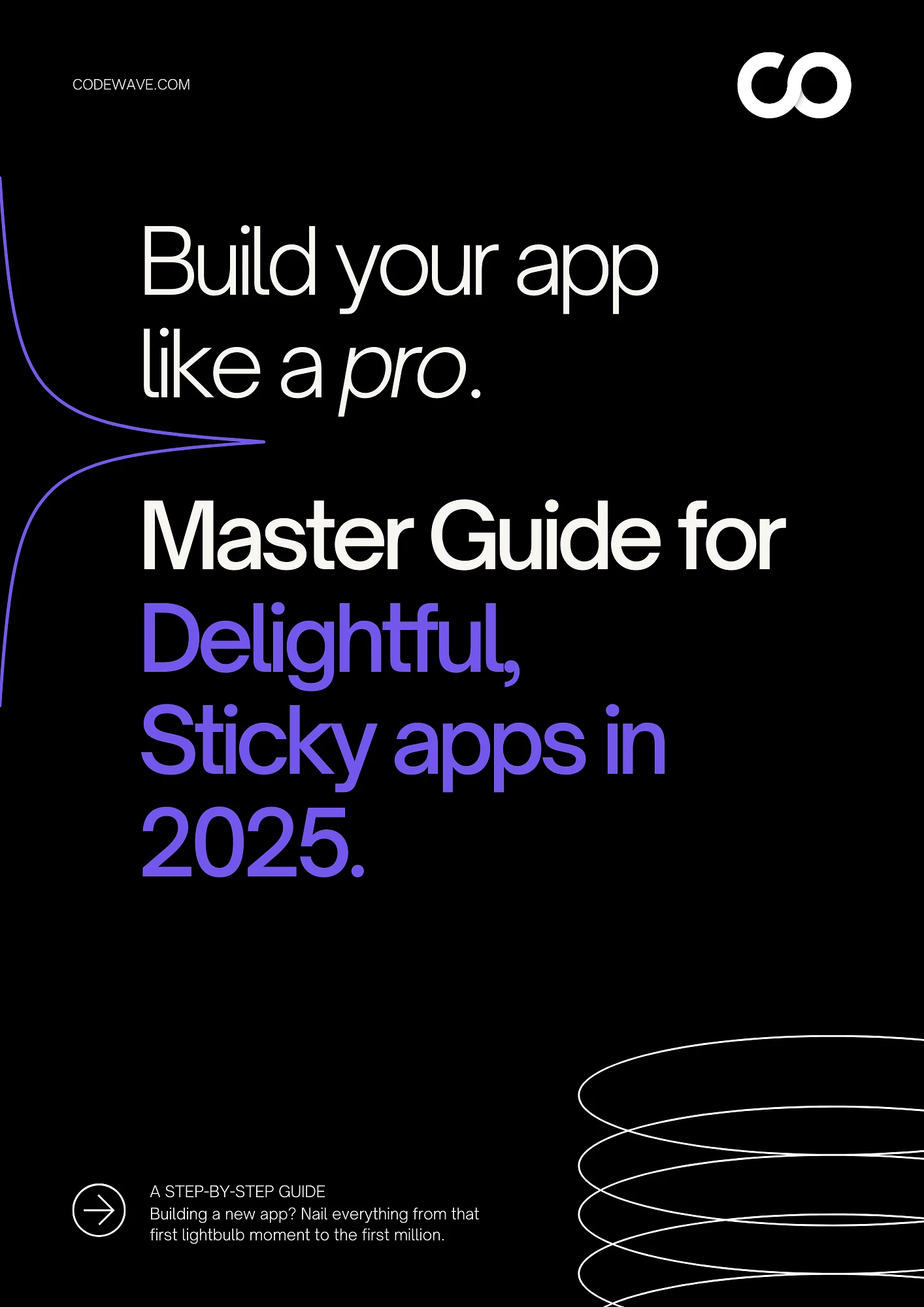Every business leader eventually faces the same puzzle: how do you connect with the right partners at the right time without drowning in inefficiency? That’s where B2B marketplace platforms come in, serving as digital hubs where businesses transact with other businesses through streamlined processes and centralized systems.
The sector currently represents a $10.59 billion market, expected to reach $23.12 billion within the next eight years. This expansion isn’t accidental. Companies are actively seeking alternatives to fragmented supplier relationships and outdated procurement methods.
This guide maps out the entire development journey, giving you a clear picture of what it takes to build a marketplace that delivers value to its users.
Key Takeaways
- Launch success depends on recruiting sellers first with fee incentives, then manually seeding products to attract buyers and break the chicken-and-egg cycle that stalls most new marketplaces.
- B2B platforms must support volume discounts, custom quotes, and in-platform negotiations. Simple fixed pricing pushes businesses to complete transactions offline, making your marketplace irrelevant.
- MVP development should focus on one complete user journey from browsing to purchase. Building half-finished versions of many features delays launch and prevents you from learning what users actually need.
- Integration with existing ERP, CRM, and accounting systems is non-negotiable. Double data entry from poor integration kills adoption faster than any design flaw.
- Operational scaling causes more failures than technical issues. Automated verification, tiered support, and clear dispute processes must be built in from day one.
What Is a B2B Marketplace App?
A B2B marketplace app is a digital portal where businesses buy and sell products or services directly with each other. It works as an organized online hub that connects verified suppliers with buyers, supports smooth transactions, and reduces the manual effort involved in sourcing or selling.
Basically, it helps companies widen their reach, streamline procurement, and build reliable trading relationships.
Use Cases of a B2B Marketplace App
- Bulk Procurement for Growing Businesses: SMEs source large quantities from trusted suppliers, compare choices quickly, and reduce the delays that usually come with long negotiation or manual vendor coordination.
- Wider Reach for Manufacturers: Manufacturers list products once and access multiple buyers, turning the platform into a steady channel for fresh leads, recurring orders, and predictable long-term demand.
- Reliable Ordering for Distributors: Distributors get updated inventory, clear pricing, and faster order placement, helping them maintain smooth fulfillment without repeated follow-ups or scattered supplier conversations.
- Niche Industry Market Access: Specialized industries use the app to trade sector specific goods that are often difficult to find elsewhere, creating a focused space for high intent buyers and sellers.
- Faster Supplier Discovery for Enterprises: Large businesses evaluate suppliers side by side, speed up vendor shortlisting, and reduce procurement cycles for new projects or expanding product lines.
- Digital Catalog Management for Suppliers: Suppliers manage product catalogs in one place, update pricing and availability instantly, and keep buyers informed without long email exchanges or manual document sharing.
B2B Marketplace App Development in 10 Steps
Building a B2B marketplace takes more than technical skills. It requires strategic thinking, user-focused design, and a clear roadmap that keeps your team aligned from start to finish. Here’s how to approach development in a way that sets you up for long-term success.
Step 1: Define Your Marketplace Model and Niche
Before writing a single line of code, you need clarity on what your marketplace will do and who it will serve. Are you connecting manufacturers with retailers, or helping service providers find enterprise clients? The model you choose determines everything from your revenue structure to the features you’ll need to build.
Important Tips:
- Research existing competitors to identify gaps in service or underserved industries that need better solutions
- Decide between a commission-based model, subscription fees, or listing charges based on your target market’s willingness to pay
- Validate your idea with potential users through interviews or surveys before committing significant resources
- Consider starting with a narrow vertical market before expanding to multiple categories
- Document your value proposition clearly so everyone on your team understands what problem you’re solving
Step 2: Conduct Market Research and Competitive Analysis
Understanding your market means knowing who your users are, what frustrates them, and how existing solutions fall short. This research phase helps you build something people actually want rather than what you think they need.
Important Tips:
- Map out the buyer journey and seller journey separately to understand different user needs and pain points
- Analyze at least five direct competitors to see what features are standard and where they’re failing users
- Talk to potential buyers and sellers to learn about their current procurement or sales processes
- Identify regulatory requirements or industry standards that could affect your platform design
- Create user personas that represent your typical buyers and sellers to guide future decisions
Step 3: Plan Your Core Features and User Experience
Your marketplace needs to serve two distinct groups: buyers looking for products or services, and sellers wanting to reach customers. The features you prioritize should make life easier for both sides while keeping transactions smooth and secure.
Important Tips:
- Start with essential features like search, product listings, messaging, and payment processing before adding nice-to-haves
- Design separate dashboards for buyers and sellers with tools relevant to each role
- Plan for mobile responsiveness from day one, since many users will access your platform on phones or tablets
- Include basic analytics so sellers can track performance and buyers can manage their purchasing history
- Build in trust mechanisms like ratings, reviews, and verification badges to encourage transactions between strangers
Step 4: Choose Your Technology Stack
The technology you build on affects everything from development speed to long-term maintenance costs. You need a stack that can handle your current needs while scaling as your marketplace grows.
Important Tips:
- Consider ready-made marketplace platforms like Sharetribe or CS-Cart if you want faster deployment with lower upfront costs
- Choose between custom development and platforms based on how unique your requirements are and your available budget
- Select a backend framework that your development team knows well, rather than chasing the newest technology
- Pick a cloud hosting provider like AWS or Google Cloud that can scale resources up or down as traffic changes
- Ensure your chosen technologies support the payment gateways and third-party integrations you’ll need later
Step 5: Design the Platform Architecture
Architecture planning determines how different parts of your marketplace communicate with each other. A solid architecture prevents technical headaches down the road and makes it easier to add new features.
Important Tips:
- Opt for a microservices approach if you anticipate complex functionality that needs to scale independently
- Plan your database structure carefully to handle product catalogs, user data, transactions, and communications efficiently
- Build with APIs that allow future integrations with shipping providers, accounting software, or CRM systems
- Consider how you’ll handle file storage for product images and documents without slowing down the platform
- Include security measures at the architecture level to protect sensitive business and payment information
Step 6: Develop Your Minimum Viable Product
Your MVP includes only the features absolutely necessary to facilitate transactions between buyers and sellers. This approach gets you to market faster and lets you learn from real users before investing in additional features.
Important Tips:
- Focus on one complete user journey from browsing to purchase, rather than building half-finished versions of many features
- Set up basic admin tools so you can manage users, resolve disputes, and monitor transactions without developer help
- Include simple onboarding processes that help new buyers and sellers understand how to use your platform
- Build in basic email notifications for important events like new orders, messages, or account updates
- Launch with manual processes for complex workflows and automate them later based on actual usage patterns
Step 7: Integrate Payment and Security Systems
Payment processing needs to be reliable and secure since you’re handling business transactions that often involve significant amounts. Security isn’t optional when companies are trusting you with their financial data and business relationships.
Important Tips:
- Choose payment gateways like Stripe or PayPal that support business transactions and handle compliance requirements for you
- Implement SSL certificates and encryption to protect data transmission between users and your servers
- Set up escrow functionality if your marketplace model requires holding funds until services are delivered or milestones are met
- Build in fraud detection mechanisms to flag suspicious activity before it becomes a problem for your users
- Ensure your platform complies with data protection regulations like GDPR or CCPA, depending on your target markets
Step 8: Test Thoroughly Across Different Scenarios
Testing catches problems before your users do. For a B2B marketplace, you need to test not just for bugs but for real-world business scenarios that could break the user experience.
Important Tips:
- Run user acceptance testing with actual business buyers and sellers to see how they interact with your platform
- Test payment flows end-to-end, including refunds, chargebacks, and failed transactions to ensure money moves correctly
- Check performance under load to see how your platform handles multiple simultaneous users and transactions
- Verify that your marketplace works across different browsers, devices, and screen sizes without breaking
- Create test scenarios for edge cases like disputed orders, seller account suspensions, or bulk purchases
Step 9: Launch and Onboard Your Initial Users
A successful launch means having both buyers and sellers ready to transact from day one. The classic marketplace challenge is solving the chicken-and-egg problem of getting both sides on board simultaneously.
Important Tips:
- Start with a soft launch to a limited group of users who can provide feedback before opening to everyone
- Recruit your initial sellers first by offering incentives like reduced fees or featured listings for early adopters
- Provide white-glove onboarding support to early users to ensure they have positive first experiences
- Create educational content like tutorials or webinars that help users understand how to maximize platform value
- Monitor user behavior closely in the first weeks to identify friction points that need immediate attention
Step 10: Gather Feedback and Iterate
Your marketplace will never be truly finished. The best platforms evolve based on how users actually behave rather than sticking rigidly to the original plan.
Important Tips:
- Set up feedback channels, like in-app surveys, support tickets, and user interviews, to capture improvement ideas
- Track key metrics like transaction volume, user retention, and time to first purchase to measure platform health
- Prioritize feature requests based on how many users ask for them and how much impact they’ll have on transactions
- Release updates regularly in small increments rather than waiting months for major overhauls
- Build a roadmap that balances quick wins with longer-term strategic features your marketplace needs to stay competitive
Common Challenges in B2B Marketplace App Development
Building a B2B marketplace comes with obstacles that can derail even well-funded projects. The key is recognizing these challenges early and having practical solutions ready before they become critical problems.
Challenge 1: Solving the Cold Start Problem
Every new marketplace faces the same dilemma: buyers won’t join without sellers, and sellers won’t join without buyers. This chicken-and-egg situation can stall your launch indefinitely if you don’t have a strategy to break the cycle.
Unlike consumer marketplaces, where you can attract users through viral marketing, B2B platforms require a more deliberate approach to building both sides of the network simultaneously.
Possible Solutions:
- Focus on recruiting high-quality sellers first by offering them exclusive early access and waived commission fees for the first few months
- Manually source and list products yourself initially to create the appearance of an active marketplace that attracts genuine buyers
- Target a hyper-specific niche where you can become the go-to solution quickly, rather than trying to serve everyone at once
- Use your existing network or industry connections to bring in anchor tenants who give your marketplace immediate credibility
- Offer value beyond transactions, such as industry insights, networking events, or educational content that attracts users even before they’re ready to buy
- Consider subsidizing early transactions or offering matching credits to incentivize the first wave of activity on your platform
Challenge 2: Building Trust Between Unknown Business Partners
B2B transactions involve larger amounts and longer-term relationships than consumer purchases, which means trust matters even more.
Businesses are naturally cautious about working with unknown suppliers or buyers, especially when their reputation or operations depend on reliable delivery.
Without established trust mechanisms, your marketplace becomes just a directory that no one actually uses for transactions.
Possible Solutions:
- Implement a thorough verification process for all sellers that includes business registration checks, background screening, and credential validation
- Create a transparent rating and review system where past transaction quality is visible to all potential buyers
- Offer buyer protection policies or escrow services that hold payment until delivery is confirmed and acceptable
- Build detailed company profiles that showcase certifications, years in business, client testimonials, and case studies
- Enable direct messaging between buyers and sellers so they can ask questions and build rapport before committing to transactions
- Start with industries where repeat transactions are common so users can build trust over time through successful interactions
Challenge 3: Managing Complex Pricing and Negotiations
B2B pricing rarely follows the simple fixed-price model of consumer marketplaces. Businesses expect volume discounts, custom quotes, contract pricing, and negotiation flexibility. If your platform can’t accommodate these complexities, users will take conversations offline, and your marketplace becomes irrelevant to the actual transaction.
Possible Solutions:
- Build tiered pricing structures that automatically apply volume discounts based on order quantity or purchase history
- Include a request-for-quote feature that lets buyers specify their exact needs and receive custom proposals from multiple sellers
- Allow sellers to create private pricing for specific buyers or customer segments based on negotiated contracts
- Implement a negotiation tool where buyers and sellers can exchange offers within the platform while maintaining transaction visibility
- Create flexible payment terms options, including net 30, net 60, or installment plans that match standard B2B practices
- Provide analytics to sellers showing market pricing trends so they can set competitive rates without excessive back-and-forth
Challenge 4: Integrating With Existing Business Systems
B2B buyers and sellers already use ERP systems, inventory management software, accounting tools, and CRM platforms. If your marketplace doesn’t connect with these existing systems, users face double data entry and workflow disruption. This friction often leads to abandoned carts and low adoption rates, no matter how good your platform looks.
Possible Solutions:
- Build APIs that allow seamless integration with popular business software like QuickBooks, SAP, Salesforce, or NetSuite
- Offer bulk upload and export functionality so sellers can manage large catalogs without manual entry for each product
- Partner with integration platforms like Zapier or Make that connect your marketplace to hundreds of business tools without custom development
- Provide webhook support so businesses can trigger automated workflows in their existing systems when marketplace events occur
- Create detailed API documentation and sandbox environments that make it easy for technical teams to build custom integrations
- Start with the most commonly requested integrations based on your user research, rather than trying to support everything at once
Challenge 5: Scaling Operations While Maintaining Quality
As your marketplace grows, the operational complexity multiplies exponentially. More users mean more disputes to resolve, more onboarding support needed, and more quality control required.
Many marketplaces fail not because of technical issues but because their operations can’t keep pace with growth, leading to deteriorating user experiences.
Possible Solutions:
- Automate repetitive tasks like seller verification, product approval, and basic customer support using rules-based systems and AI tools
- Build self-service resources, including comprehensive FAQs, video tutorials, and knowledge bases that reduce support ticket volume
- Implement tiered support levels where VIP sellers or high-volume buyers receive priority assistance and dedicated account managers
- Create clear dispute resolution processes with defined timelines and escalation paths so conflicts don’t linger unresolved
- Use data analytics to identify problem patterns early, such as consistently low-rated sellers or frequently disputed product categories
- Hire specialized operations team members as you grow, rather than expecting your founding team to handle everything manually forever
Challenge 6: Handling Diverse Regulatory and Compliance Requirements
B2B marketplaces often operate across multiple regions, industries, and regulatory environments simultaneously. What’s legal in one jurisdiction might be restricted in another. Industries like healthcare, food services, or chemicals come with strict compliance requirements that your platform must support or risk serious legal consequences for you and your users.
Possible Solutions:
- Research regulatory requirements specific to your target industries and build compliance checks directly into your onboarding and listing processes
- Implement geo-blocking or restricted access features that prevent prohibited transactions based on buyer and seller locations
- Require sellers to upload necessary certifications, licenses, or permits before listing regulated products or services
- Partner with legal experts or compliance consultants who specialize in your marketplace’s industry verticals
- Build audit trails that track all transactions and changes for regulatory reporting and investigation purposes
- Stay updated on changing regulations through industry associations and adjust your platform proactively rather than reactively
B2B Marketplace App Development Cost
Building a B2B marketplace app is a sizable investment, and the final cost depends on how ambitious your platform is and the team you choose. Most early-stage MVPs land somewhere in the $50,000 to $100,000 range, while a fully customized, enterprise-grade marketplace can move into the $300,000 to $500,000 bracket. These are not fixed figures but helpful ballpark estimates to understand what goes into the build. Below is a clearer look at what typically drives the budget.
Key Cost Drivers
- Development team composition and location: Hourly rates shift widely by region. Teams in North America or Western Europe often charge $100 to $200 per hour, while Eastern Europe or Asia may fall between $30 to $80 per hour. This single factor can influence your budget dramatically.
- Platform complexity and custom features: Basic marketplace features are usually straightforward. Costs rise when you introduce custom workflows such as advanced pricing engines, negotiation modules, or unique matching logic that require specialized engineering effort.
- Design and user experience work: UI/UX design can take up 10 to 15% of your development budget. This includes user research, wireframes, prototypes, and final interface design. Strong design shortens onboarding time and improves adoption.
- Third-party integrations and APIs: Each integration adds development time and sometimes recurring fees. Payments, logistics, ERP systems, identity verification, and communication tools all contribute to the overall cost and long-term operational spend.
- Infrastructure and hosting costs: Cloud hosting usually starts around $500 to $2,000 per month for small platforms. Costs increase as traffic, storage, and transaction volume grow. This is one area that continues evolving as your marketplace scales.
- Security and compliance implementation: Meeting security standards and handling sensitive business data safely can add 15-20% to the base build. Encryption, secure payments, and data protection requirements prevent expensive problems later.
- Testing and quality assurance: A reliable marketplace needs thorough testing across devices, browsers, and user scenarios. QA often accounts for 20 to 25% of development time to make sure everything behaves correctly under real usage.
- Post-launch maintenance and updates: Annual maintenance typically lands around 15 to 20% of the original build cost. This covers bug fixes, performance updates, new features, and ongoing technical support to keep the platform competitive.
- Marketing and user acquisition: Attracting your first set of buyers and suppliers can be a major expense. In many industries, marketing investment can rival or even exceed the development budget during the early growth phase.
Caveat: These figures are broad estimates meant to help with early planning. Actual costs can shift based on your industry, feature depth, team structure, and long-term scalability needs.
Technology Stack for B2B Marketplaces
Your technology choices determine development speed, scalability potential, and long-term maintenance requirements. The right stack balances your immediate needs with future growth while considering your team’s expertise and available budget.
Here’s what most successful B2B marketplaces use across different layers of their platform.
| Technology Layer | Popular Options |
|---|---|
| Frontend Framework | React.js for dynamic interfaces, Vue.js for lighter applications, Angular for enterprise-grade complexity, or Next.js for server-side rendering and better SEO performance |
| Backend Framework | Node.js with Express for JavaScript consistency, Python with Django for rapid development, Ruby on Rails for convention-based efficiency, or PHP with Laravel for cost-effective solutions |
| Database | PostgreSQL for complex relational data and transactions, MongoDB for flexible document storage, MySQL for proven reliability, or Redis for caching and session management |
| Cloud Hosting | AWS for comprehensive services and scalability, Google Cloud Platform for AI/ML capabilities, Microsoft Azure for enterprise integration, or DigitalOcean for simpler, budget-friendly hosting |
| Payment Processing | Stripe for developer-friendly integration and global support, PayPal for brand recognition, Braintree for advanced features, or Adyen for international marketplace transactions |
| Search Functionality | Elasticsearch for powerful full-text search, Algolia for instant search experiences, Apache Solr for enterprise search, or a built-in database search for basic requirements |
| File Storage | Amazon S3 for scalable object storage, Cloudinary for image optimization and delivery, Google Cloud Storage for integration with GCP, or Azure Blob for Microsoft ecosystem compatibility |
| Communication Tools | Twilio for SMS and voice, SendGrid for transactional emails, Firebase for real-time messaging, or Socket.io for live chat and notifications between buyers and sellers |
To reduce development time and improve quality, Codewave uses Code Accelerate, a proven set of tools, libraries, and reusable building blocks that help teams build products up to three times faster. This approach keeps your timeline predictable and your engineering effort focused on business-specific features.
If you want to see how this setup works in practice, you can book a free demo and explore how Codewave builds scalable B2B marketplace apps with speed and clarity.
Essential Features for B2B Marketplace Apps
Your feature set determines whether businesses will actually use your platform for transactions or just browse and contact sellers offline.
B2B marketplaces need different capabilities than consumer platforms because they handle complex workflows, larger transactions, and ongoing business relationships. Here are the must-have features organized by user type.
| Feature Category | Key Capabilities |
|---|---|
| User Management | Separate registration and authentication for buyers and sellers, role-based access control, company profile pages with verification badges, team account management with multiple user permissions, and single sign-on integration for enterprise users |
| Product Management | Bulk product upload and editing tools, detailed product catalogs with specifications and documentation, inventory tracking and availability updates, product categorization and tagging, variant management for different sizes or configurations, and digital asset storage for manuals or certifications |
| Search and Discovery | Advanced filtering by multiple criteria like price, location, certifications, and delivery time, keyword search with autocomplete, category browsing with subcategories, saved searches and alerts for new matching products, and personalized recommendations based on purchase history |
| Pricing and Quotations | Dynamic pricing with volume discounts and tiered pricing structures, a request for quote system with custom proposal submission, negotiation tools for back-and-forth price discussions, contract pricing for established buyer-seller relationships, and bulk order discounts applied automatically at checkout |
| Order Management | Shopping cart with save-for-later functionality, purchase order generation and tracking, order history and reorder capabilities, split shipments for large orders, order modification requests before fulfillment, and bulk ordering tools for repeat purchases |
| Payment Processing | Multiple payment methods, including credit cards, ACH transfers, and wire transfers, invoice generation with customizable terms, payment scheduling for net 30/60/90 terms, escrow services for high-value transactions, multi-currency support for international trade, and automated payment reminders |
| Communication Tools | Direct messaging between buyers and sellers, a notification system for order updates and messages, inquiry management for pre-purchase questions, dispute resolution messaging with admin involvement, and email integration for external communication tracking |
| Reviews and Ratings | Seller rating system based on transaction history, detailed product reviews with verified purchase badges, response capability for sellers to address feedback, rating filters for search results, and aggregate ratings displayed on seller profiles |
| Analytics and Reporting | Sales dashboards for sellers showing revenue trends and top products, buyer analytics tracking spending patterns and favorite suppliers, transaction reports for accounting and tax purposes, performance metrics like conversion rates and average order value, and export functionality for external analysis |
| Admin Panel | User management with approval and suspension capabilities, content moderation for listings and reviews, transaction monitoring and dispute resolution tools, commission and fee management, platform analytics showing overall marketplace health, and system configuration for rules and policies |
| Mobile Responsiveness | Fully functional mobile website or native apps for iOS and Android, touch-optimized interfaces for browsing and purchasing, mobile notifications for time-sensitive updates, camera integration for document uploads, and offline mode for viewing saved content |
| Integrations | API access for custom integrations with business systems, pre-built connectors for popular ERP and accounting software, shipping carrier integration for rate calculation and label printing, CRM integration for customer relationship management, and webhook support for event-driven automation |
Why Choose Codewave for Building Your First B2B Marketplace App
Codewave specializes in creating customized B2B portal and marketplace solutions tailored to specific business needs, with proven expertise in delivering portals 3X faster at 30% reduced cost.
What sets Codewave apart is our design thinking approach that places user needs at the center of every development decision. We’ve successfully built complex B2B-cum-B2C marketplace platforms using cutting-edge technologies like PubNub for real-time features, demonstrating our ability to handle sophisticated requirements.
Recognized as a 2024 Fall Global Award winner on Clutch for excellence in custom software development, AI, and digital transformation, we bring award-winning expertise to your project.
Here’s why you’ll want us on your team:
- Fully integrated marketplace systems: We seamlessly integrate B2B portals with your existing enterprise systems, including ERP, CRM, and PIM, ensuring a connected experience across your entire business infrastructure, rather than creating isolated platforms that require manual workarounds.
- Proven track record with marketplace development: With over 400 successful digitization projects completed, we’ve built marketplace platforms ranging from hyper-local deal aggregators to specialized content marketplaces, giving us deep insights into what makes marketplaces succeed across different industries.
- Design thinking-led approach: We dive deep into understanding your users and business challenges, uncovering real pain points and opportunities to create portals that are genuinely engaging and valuable, not just functional checkboxes that users struggle to adopt.
- Scalable and secure architecture: Our platforms are designed to grow with your business, backed by top-tier security measures and cloud infrastructure that handles increasing transaction volumes without performance degradation or costly rebuilds down the line.
- Rapid development without compromising quality: Our proven agile methodologies and experienced team mean faster time to market, letting you validate your marketplace concept and start generating revenue while competitors are still in planning phases.
- Comprehensive technology expertise: We work with modern tech stacks, including MERN, React, Node.js, and cloud platforms like AWS and Google Cloud, while also specializing in emerging technologies like AI, IoT, and blockchain when your marketplace needs advanced capabilities.
- Post-launch support and optimization: We provide 24/7 customer service automation and ongoing maintenance to ensure your marketplace continues performing optimally as your user base grows and requirements evolve.
Explore our portfolio to see how we’ve helped businesses transform their operations through custom marketplace and portal solutions.
Frequently Asked Questions
- What is B2B marketplace app development?
It’s creating a digital platform where businesses buy from and sell to other businesses. The process involves building product catalogs, payment systems, user verification, and messaging features that help suppliers and buyers complete transactions in one centralized online space.
- How long does it take to develop a B2B marketplace app?
A basic marketplace with core features usually takes four to six months from planning to launch. More complex platforms with custom integrations and specialized workflows can take eight to twelve months or longer, depending on your specific requirements and team size.
- What are the must-have features for a B2B marketplace app?
You need separate registration for buyers and sellers, product management with bulk uploads, advanced search, request for quote systems, secure payments with invoicing, direct messaging, order tracking, ratings and reviews, and admin tools for managing users and resolving disputes.
- What challenges should I expect when building a B2B marketplace?
Getting your first buyers and sellers on board simultaneously is the toughest challenge. You’ll also need to build trust between unknown businesses, handle complex pricing models, integrate with existing business software, and scale operations without quality dropping as you grow.
- Should I build a custom B2B marketplace or use a ready-made platform?
Ready-made platforms work well for straightforward needs and faster launches with lower costs. Custom development makes sense when you need specialized features, unique workflows, or deep integrations that pre-built solutions cannot handle. Consider your budget, timeline, and how different your requirements are.
Codewave is a UX first design thinking & digital transformation services company, designing & engineering innovative mobile apps, cloud, & edge solutions.







